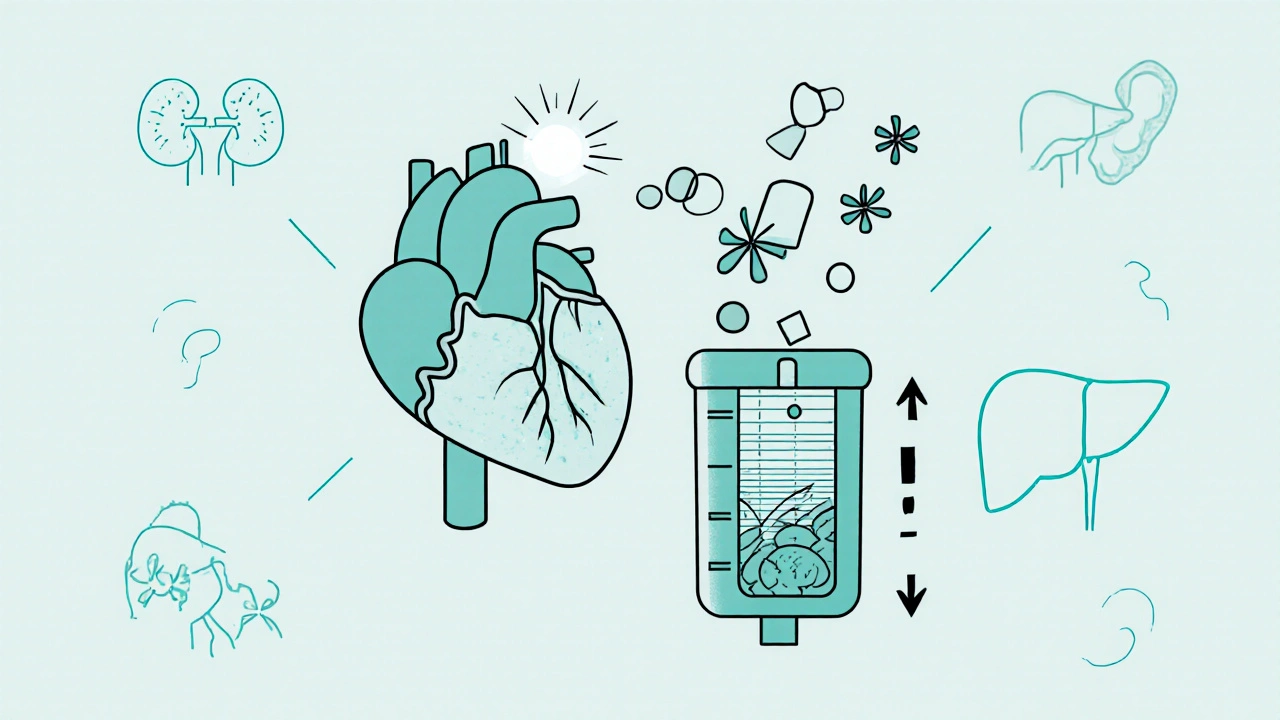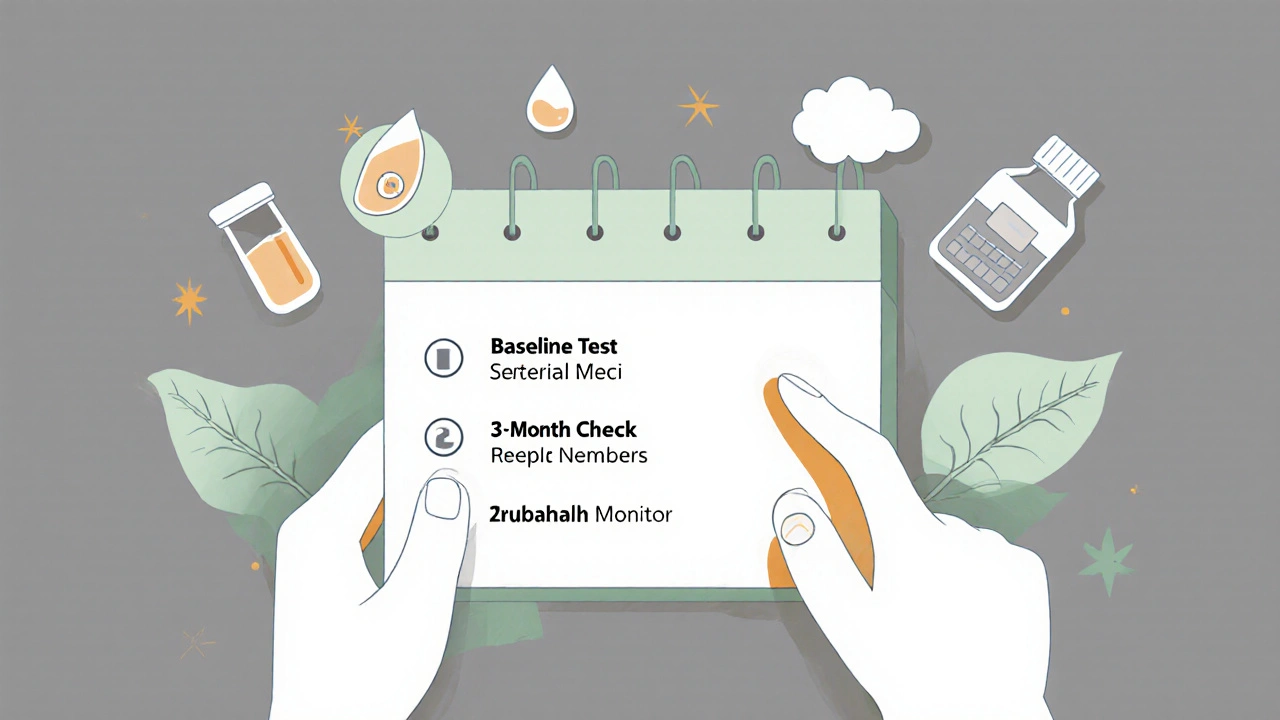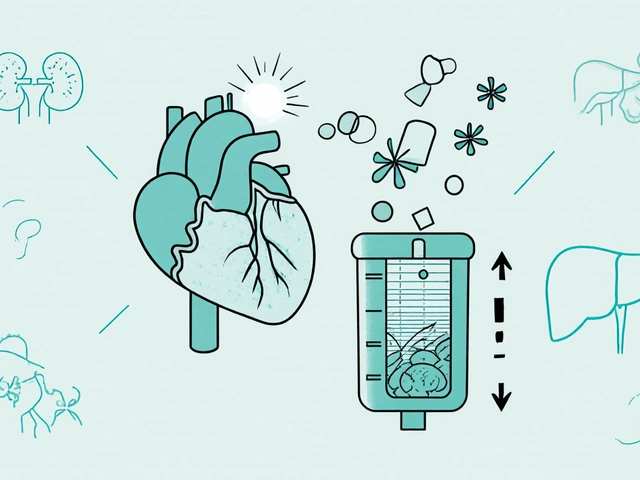
Rosuvastatin Side Effect Risk Calculator
How your factors affect side effect risk
This tool estimates your risk of side effects based on the latest medical guidelines. Remember: most people experience no side effects, but risk increases with higher doses and certain health conditions.
When your doctor prescribes rosuvastatin, it’s not just another pill. It’s a powerful tool designed to slash your LDL cholesterol by up to 63%-more than most other statins can do. But with that power comes responsibility. You need to know what to watch for, when to speak up, and how to stay safe while getting the full benefit. This isn’t about fear. It’s about smart use.
Why Rosuvastatin Stands Out
Rosuvastatin, sold as Crestor and in generic form, is one of the strongest statins on the market. At 20 mg, it lowers LDL cholesterol by about 55%. Compare that to atorvastatin 20 mg, which drops it around 40%, or simvastatin 40 mg, which only gets you 25-35%. That difference matters if you’ve had a heart attack, have diabetes, or carry a high genetic risk. Rosuvastatin doesn’t just nudge your numbers-it moves them hard.
Its strength comes from how it works. It blocks HMG-CoA reductase, the enzyme your liver uses to make cholesterol. But unlike older statins, rosuvastatin is hydrophilic-meaning it doesn’t easily cross into brain or muscle tissue. That’s why some people report fewer brain fog or muscle issues compared to lipophilic statins like simvastatin. But it also means your kidneys handle more of the cleanup. That’s the trade-off.
It’s also built to last. With a half-life of about 19 hours, one pill a day is enough. You can take it with or without food. No need to plan meals around it. And because only 10% of it is broken down by liver enzymes (CYP2C9), it plays nice with other medications. That’s a big deal if you’re on blood pressure pills, anticoagulants, or diabetes drugs.
What Side Effects Actually Happen
Most people take rosuvastatin with no issues. But side effects are real-and they’re dose-dependent. At 5 mg or 10 mg, the risk is low. At 40 mg? That’s where things shift.
Muscle pain is the most common complaint. About 5-10% of users report mild aches or cramps. That’s normal. But if it turns into deep, unexplained soreness, weakness, or dark urine, stop the pill and call your doctor. That could be early signs of rhabdomyolysis-a rare but serious muscle breakdown. The risk is under 0.1%, but it’s real. In 2022, muscle pain made up nearly 30% of all rosuvastatin-related adverse events reported to the FDA.
Liver enzymes can rise in about 1-2% of users. That doesn’t mean liver damage. It just means your liver is processing the drug. The FDA no longer recommends routine monthly blood tests for asymptomatic people. But if you feel unusually tired, your skin turns yellow, or you have dark urine, get tested. ALT or AST levels over 3 times the normal limit mean it’s time to stop.
Diabetes risk is another quiet concern. Statins, including rosuvastatin, can slightly raise blood sugar. Studies show an increase of 5-10 mg/dL in fasting glucose and a 0.1-0.3% rise in HbA1c. That’s small-but if you’re prediabetic or overweight, it matters. Your doctor should check your HbA1c before starting and again in 3-6 months.
Protein in urine is specific to rosuvastatin. At 40 mg, the risk of proteinuria (protein leaking into urine) is 2.3 times higher than at 10 mg. It’s usually mild and reversible when you lower the dose. But if you have kidney issues, this is a red flag. That’s why the 40 mg dose is banned if your eGFR is below 60.
Who Needs Special Monitoring
Not everyone needs the same checks. Your risk profile changes everything.
- If you have kidney disease: eGFR below 60? Don’t take 40 mg. Below 30? Don’t take rosuvastatin at all. Your doctor should check your kidney function before you start and every 6-12 months after. If your eGFR drops, they’ll lower your dose or switch you to pravastatin or fluvastatin-statins that don’t rely as much on kidneys.
- If you’re Asian: Studies show Asian populations process rosuvastatin slower. A 5 mg dose may be just as effective as 10 mg for others. Start low. Don’t assume you need the same dose as someone else.
- If you’re over 75: Older adults are more sensitive to muscle side effects. Many doctors start at 5 mg and go slow. The benefits still outweigh risks-but caution is key.
- If you’re on other meds: Even though rosuvastatin has fewer interactions, avoid it with cyclosporine, gemfibrozil, or high-dose niacin. These can spike your blood levels and raise muscle risk.
What to Track-And When
You don’t need endless blood tests. But you do need the right ones at the right time.
- Before starting: Get a baseline blood test: ALT, AST, CK, eGFR, HbA1c, and fasting lipids.
- 3 months after starting or changing dose: Repeat ALT, AST, eGFR, and HbA1c. If everything’s stable, you’re good.
- Annually: Keep checking eGFR and HbA1c. Lipids every 6-12 months to confirm it’s working.
- When you have symptoms: Muscle pain? Get CK tested. Fatigue or jaundice? Check liver enzymes. Swelling or foamy urine? Check for protein.
Don’t test CK just because you’re worried. Only test if you have symptoms. Most muscle aches fade on their own. But if your CK is over 5 times the upper limit (usually over 1,000 U/L), stop the drug immediately.
What Patients Say-And What to Believe
Online reviews are mixed. On Drugs.com, rosuvastatin scores 5.8 out of 10. Half say it saved their life. The other half say it wrecked their muscles.
Here’s the truth: Most people who quit did so because of mild muscle discomfort-not rhabdomyolysis. One Reddit user wrote, “My legs hurt at 20 mg. Switched to 10 mg. No pain. LDL still at 80.” That’s the sweet spot. You don’t always need the highest dose. Sometimes 10 mg cuts LDL by 50%-enough for many.
Another common story: “I was told my liver enzymes were high. I stopped. They went back to normal in 4 weeks. I restarted at 5 mg. No issues.” That’s not failure. That’s smart management.
Don’t let scary stories scare you away. Statins prevent heart attacks. For every 100 people at high risk, taking rosuvastatin prevents 5 major cardiovascular events over 5 years. The side effect risk? Less than 1 in 100.

What to Do If You’re Worried
If you’re on rosuvastatin and feel off, don’t panic. Don’t quit cold turkey. Talk to your doctor.
- Keep a symptom journal: Note when pain started, where it is, how bad it is, and if it’s worse after activity.
- Ask about lowering the dose. Many people do better on 5 mg or 10 mg.
- Ask if you’re a candidate for genetic testing. Some people have an SLCO1B1 gene variant that makes them absorb more rosuvastatin. That can explain unexplained muscle pain.
- Ask about alternatives. Pravastatin, fluvastatin, or pitavastatin are gentler on kidneys and muscles.
And remember: Stopping statins without a plan is riskier than staying on them. If you’re scared, ask for a second opinion. But don’t walk away from a proven life-saving drug over fear.
The Bottom Line
Rosuvastatin is powerful. It’s not for everyone. But for those who need it, it’s often the best tool available. The key isn’t avoiding side effects-it’s managing them.
Take it as prescribed. Report muscle pain early. Get your kidneys and blood sugar checked once a year. Don’t assume your dose is right just because it was prescribed last year. Your body changes. Your risk changes. Your dose might need to change too.
Most people on rosuvastatin live longer, healthier lives. But only if they know what to watch for-and when to act.
Can rosuvastatin cause muscle damage?
Yes, but it’s rare. Mild muscle aches affect 5-10% of users and often go away on their own. Severe muscle damage (rhabdomyolysis) happens in fewer than 0.1% of people. Watch for unexplained pain, weakness, or dark urine. If you have these, get a CK blood test immediately. Stop the drug if CK is over 5 times the normal level.
Do I need to get my liver checked regularly on rosuvastatin?
No, not if you have no symptoms. The FDA no longer recommends routine liver enzyme tests for people who feel fine. But you should get a baseline test before starting, then again at 3 months after beginning or changing your dose. After that, only test if you develop fatigue, nausea, yellow skin, or dark urine.
Is rosuvastatin safe if I have kidney problems?
It depends on how bad your kidney function is. If your eGFR is below 60, you should not take the 40 mg dose. If it’s below 30, you shouldn’t take rosuvastatin at all. Your doctor will likely lower your dose to 5 mg or 10 mg and may switch you to a statin like pravastatin that’s easier on the kidneys.
Can rosuvastatin cause diabetes?
It can slightly raise blood sugar levels. Studies show an average increase of 5-10 mg/dL in fasting glucose and 0.1-0.3% in HbA1c. This is more common in people who are already overweight or prediabetic. Your doctor should check your HbA1c before starting and again after 3-6 months. The cardiovascular benefits still far outweigh this small risk.
What’s the best dose of rosuvastatin?
There’s no one-size-fits-all. For most people needing high-intensity statin therapy, 20 mg is standard. But many do just as well on 10 mg, especially if they’re Asian, older, or have kidney issues. The goal is to get your LDL below target with the lowest dose that works. Start low, increase only if needed, and never assume you need the highest dose.
Can I switch from rosuvastatin to another statin if I have side effects?
Yes, and it’s often the right move. If you have muscle pain or kidney concerns, switching to pravastatin, fluvastatin, or pitavastatin can help. These are less potent but gentler on muscles and kidneys. Your doctor can match the LDL-lowering effect with a different statin. Don’t give up on statins-just find the right one for you.
Next steps: If you’re on rosuvastatin, schedule your annual kidney and blood sugar check. If you’ve been on it for over a year without a blood test, call your doctor. If you’re thinking about starting it, ask about your kidney function and diabetes risk first. Knowledge is your best defense.



